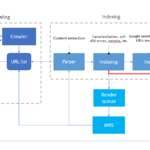What Are Stability Guidelines and Their Importance in the Pharmaceutical Industry?
By :Dr. Dhriti Tupe, GxP Expert ®
In the pharmaceutical industry, the stability of a drug product is critical in ensuring its safety, efficacy, and quality throughout its shelf life. Stability guidelines provide a framework for evaluating how environmental factors such as temperature, humidity, and light impact the product over time. These guidelines help manufacturers design stability studies to ensure that drugs maintain their intended properties and performance from production until they reach the patient.
What Are Stability Guidelines?
Stability guidelines outline the requirements for testing the physical, chemical, biological, and microbiological characteristics of drug substances and products. The primary goal is to determine how long a product remains effective under specified storage conditions. These guidelines are established by regulatory bodies such as the International Council for Harmonisation (ICH), the World Health Organization (WHO), and national authorities like the U.S. FDA or the European Medicines Agency (EMA).
Key ICH guidelines for stability studies include:
– ICH Q1A (R2): Stability Testing of New Drug Substances and Products
– ICH Q1B: Stability Testing of Photostability of New Drug Substances and Products
– ICH Q1C to Q1F: Address stability data requirements for different scenarios, including refrigerated products and accelerated stability testing.
Importance of Stability Guidelines in Pharmaceuticals
Ensures Drug Efficacy and Safety:
Stability testing confirms that a drug remains effective and safe for use over time.
Determines Shelf Life:
By following stability guidelines, manufacturers can determine the drug’s shelf life.
Regulatory Compliance:
Stability guidelines are a cornerstone of regulatory submissions.
Product Development:
During formulation development, stability testing helps identify the best formulations, packaging, and storage conditions.
Supports Global Distribution:
Stability testing under different climatic zones ensures the product’s global availability.
Reduces Product Recalls:
Stability testing prevents stability-related failures in the market.
Summary
Stability guidelines are a fundamental aspect of pharmaceutical development and regulatory compliance. By ensuring a drug remains stable throughout its intended shelf life, pharmaceutical companies can safeguard patient safety, ensure efficacy, and comply with regulatory requirements .
Written By :
Dr. Dhriti Tupe, GxP Expert ®
Quality Compliance Lead Mentor Ph.D. MBA LLS- MB, GB, BB LSS-Minitab LSS Expert-Harvard Publishing Case Studies LLS-Healthcare CQA and IRCA Certified ISO 9001:2015 Lead Auditor GxP Consulting Adviser Pfizer









